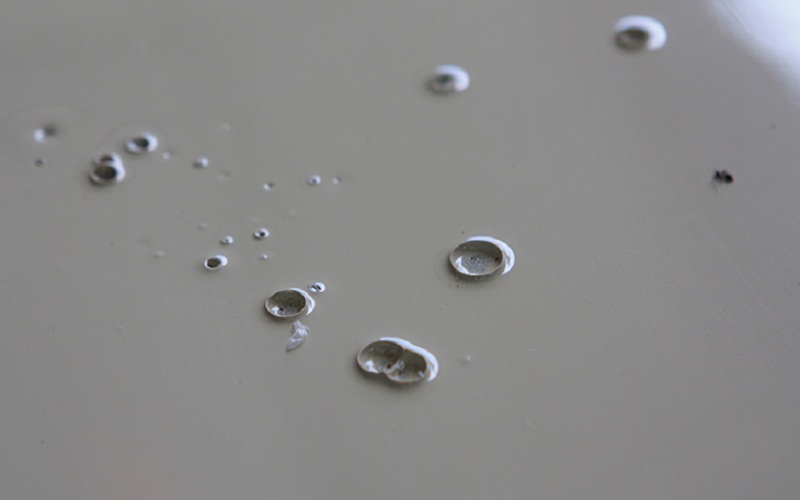Preventing Bubble Formation In Epoxy Floor
Preventing Bubble Formation In Epoxy Floor

Nothing can be more annoying than spending your time and money into something that really doesn’t work. While epoxy flooring have a number of great benefits, including their durability, cost-effectiveness, and range of available colors, there is tendency for bubbles to arise on your floor coating if the floor is not properly prepared or applied.
Formation of bubbles is all too familiar with epoxy floor applicators. Bubbles are usually witnessed to be the size of a pinhead or more than an inch in diameter. They are sometimes found in the entire floor or as a group. Various reasons can cause bubble in epoxy floor, one out of many reasons is air being trapped in the floor, typically due to a phenomenon called 'out gassing'. This usually occurs when the epoxy begins to cure. Rise in temperature is the reason for heating of the air in the concrete making it expand and form bubbles.
Another important reason worth mentioning which could also be responsible for bubbles or Pin-holes in epoxy floors is improper mixing of epoxy part A (Resin) and part B (Catalyst), and inappropriate priming or rapid drying of the surface of the coating. Other causes of formation of bubbles in epoxy floors is excessive moisture, as water vapor coming up through the concrete, whether it’s from the ground or part of the concrete’s ongoing curing process, can cause floor coatings to bubble or blister quickly.
To prevent bubbles being formed in epoxy floors, application of a primer is highly recommended. Also never apply the coating in direct rays of the sun and always use a drill of a slower speed when mixing the coating. When a roller is used to apply the coating, it is better to use a medium roller. The epoxy should be applied very slowly in a gentle motion. This will be helpful in preventing bubbles from being formed in epoxy floor.
We advise you to stir gently, making sure your tool does not come out your container. Stir until the mixture is perfectly uniform. For small amount of resin, using a one inch large flat metal spatula is recommended. Do not use a wooden stick as wood porous and may contain humidity that can affect and irrevocably damage polyurethane resins. And for bigger amount of resin, make sure to select a mixer with the appropriate size. The head of the mixer should always be fully deep in the mixture. Let the mixture blend naturally before applying the resin. But be careful though, timing is important, the more you delay, the thicker the mixture becomes, am sure you wouldn’t want to experience that.
Finally, air bubbles will come out of the resin more easily when the layer is thin. The thicker, the more difficult it is for the bubbles to come out naturally. Furthermore, in respect to temperature shifts, an increased level of humidity can cause the epoxy coating to not set properly, leading to bubbles or even a failure to bond to the floor. In order to prevent bubbles or pinholes, we recommend you hire an experienced epoxy service provider who will take the precautions needed. Proper surface preparation is the most vital step, ensuring that the floor is cleared of debris and deposits that can cause bonding issues.
Nevertheless, most epoxy floor coatings only work the way they are projected when they properly bond to the concrete beneath. If they are applied messily or under the wrong conditions, you may in all likelihood witness bubbles or it may start to peel within just a few months of application. This is the more reason why the surface of your floor should be thoroughly and correctly prepared before any coating is applied. To learn more about preventing bubbles formation in epoxy floors, visit Epoxy Oilserv Limited, they conduct 3 days intensive training on epoxy flooring every Month in Nigeria.
Recent Posts
-
Press Release: Same Great Lube, Less Waste: Lubemax 50:50 makes the Switch to Sustainable Packaging
In a move towards environmental responsibility, Epoxy Oilserv Nigeria Limited is proud to announce t …Apr 23, 2024 -
Top 8 Generators Recommended by Professionals in Nigeria (Reviews)
Generators can keep your home or business running with your essential equipment until the power is b …Apr 23, 2024 -
Transformer Safety: Preventing and Managing Common Hazards
Transformers are critical components in the electrical distribution system, handling high volt …Apr 23, 2024


